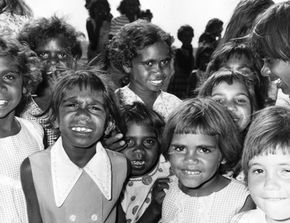Aboriginal Australians in the 20th Century
The practice of slavery in Australia didn't end at the same time it did in the United States. There was no war, and there was no proclamation decreeing that all slaves must go free. In fact, slavery didn't end in Australia until the 1970s. However, it did take a different form than it did in the United States.
Beginning in 1910, non-indigenous Australians began to take Aboriginal children from their homes and families. These children, known as the Stolen Generation, were either given to white families – to be raised as white children – or to institutions and orphanages where they were forced to assimilate to white society. Between 1910 and 1970, when the practice stopped, over 100,000 children had been separated from their families and culture [source: Parliament of Australia]
Advertisement
In 1967, following the example of the Civil Rights Movement in America, Aboriginal Australians began to fight for equal rights. The white Australians – the only ones with the power to vote – passed a referendum to the Australian constitution that gave indigenous Australians the right to vote. The passing of the referendum also meant that Aboriginal people could be included in future censuses, officially recognizing them as citizens of Australia.
Aboriginal people are still fighting for equality in Australia today, and racism is still prevalent throughout the continent. The life expectancy of a typical indigenous Australian lags about eight years behind that of a typical white Australian [source: Creative Spirits]. Aboriginal people still don't own most of the land that was taken from them during the colonial period.
